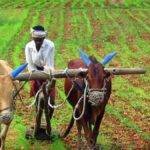Main Points In Hindi (मुख्य बातें – हिंदी में)
इस लेख में जापान के चावल उत्पादन संकट के मुख्य बिंदुओं को संक्षेप में प्रस्तुत किया गया है:
-
उपयोगी चावल उत्पादन में कमी: जापान में चावल का उत्पादन 1967 में 14.3 मिलियन टन से घटकर 2022 में सिर्फ 7.3 मिलियन टन रह गया है, जो कि उच्च कीमतों को बनाए रखने हेतु सरकार की नीतियों का परिणाम है।
-
अप्रत्याशित चावल की कमी: 2024 की गर्मियों में, जापान को चावल की कमी का सामना करना पड़ा, जिसके कारण सुपरमार्केट की अलमारियां खाली हो गईं। यह स्थिति विशेष रूप से खराब मौसम और निम्न-गुणवत्ता वाली उपज के कारण उत्पन्न हुई।
-
बढ़ती मांग और उपभोक्ता की दौड़: भूकंप की चेतावनियों और महामारी के बाद के पर्यटन के कारण चावल की मांग में वृद्धि हुई है। उपभोक्ताओं ने चावल खरीदने के लिए दौड़ लगाई, जिससे अधिक आपूर्ति पर दबाव पड़ा।
-
सरकारी नीति और भंडार: जापान सरकार के पास चावल का आपात भंडार है, लेकिन अधिकारियों ने इसे जारी करने से इनकार कर दिया है, जिससे स्थिति की स्थिरता प्रभावित हुई है। सरकार के निर्णय से कृषि क्षेत्र में चिंता बढ़ रही है, खासकर आगामी चुनावों के मद्देनजर।
- खाद्य सुरक्षा नीतियों की कमियाँ: इस संकट ने जापान की खाद्य सुरक्षा नीतियों में कमियों को उजागर किया है। सरकार को जनता की चिंता को प्रबंधित करने में और अधिक पारदर्शिता और संचार पर ध्यान देने की आवश्यकता है। भविष्य की कृषि नीतियों को उपभोक्ता-केंद्रित और लचीला बनाने का अवसर है।
Main Points In English(मुख्य बातें – अंग्रेज़ी में)
Here are the main points regarding the recent rice shortages in Japan:


-
Decline in Rice Production: The Japanese government’s policy to limit rice production in order to maintain high prices has led to a significant drop in output, from 14.3 million tons in 1967 to only 7.3 million tons in 2022.
-
Recent Supply Crisis: In summer 2024, Japan faced an unexpected rice shortage, creating confusion as supermarket shelves ran empty. While a decline in supply before the October harvest is usual, this year’s crisis was exacerbated by unique factors, including adverse weather that reduced the proportion of high-quality rice.
-
Increased Demand: Rising consumer demand, driven by factors such as earthquake warnings and increased domestic storage following the pandemic, has further strained the limited supply of rice, prompting consumers to rush to purchase rice after the Miyazaki earthquake in August.
-
Government Response and Stock Management: Despite having a reserve of 910,000 tons of rice for emergencies, the government declined to release any during the crisis, believing the situation would resolve itself with the upcoming harvest. This reluctance is linked to concerns over lower prices affecting farmer support ahead of elections.
- Food Security Concerns: The crisis has revealed deficiencies in Japan’s food security policies, highlighting the need for a more transparent and consumer-focused approach. As Japan reevaluates its agricultural policies, there is an opportunity to balance producer interests with the need to maintain public confidence and stability during crises.
Complete News In Hindi(पूरी खबर – हिंदी में)
ऊंची कीमतों को बनाए रखने के लिए चावल के उत्पादन को प्रतिबंधित करने की जापानी सरकार की नीति ने आपूर्ति को और अधिक प्रभावित किया है। चावल का उत्पादन नाटकीय रूप से गिर गया है, 1967 में 14.3 मिलियन टन से घटकर 2022 में केवल 7.3 मिलियन टन रह गया है, जिससे प्रणाली छोटी-मोटी रुकावटों के प्रति संवेदनशील हो गई है।
2024 की गर्मियों में, जापान को अप्रत्याशित चावल की कमी का सामना करना पड़ा, जिससे सुपरमार्केट की अलमारियां खाली होने से भ्रम की स्थिति पैदा हो गई। हालाँकि अक्टूबर की फसल से पहले आपूर्ति में ऐसी गिरावट आम बात है, इस साल का संकट कई अद्वितीय कारकों के कारण और भी बदतर हो गया है। 2023 में सामान्य चावल उत्पादन के बावजूद, अप्रत्याशित मौसम ने उच्च गुणवत्ता वाले चावल की हिस्सेदारी कम कर दी। निम्न-गुणवत्ता वाली कुछ उपज को त्याग दिया गया, जिससे उपलब्ध स्टॉक और कम हो गया।
बढ़ती मांग ने भी कमी में योगदान दिया। जापान मौसम विज्ञान एजेंसी की भूकंप चेतावनियों के कारण महामारी के बाद पर्यटन और घरेलू भंडारण में वृद्धि ने पहले से ही सीमित आपूर्ति पर अतिरिक्त दबाव पैदा कर दिया। अगस्त में मियाज़ाकी भूकंप के बाद सावधान उपभोक्ता चावल खरीदने के लिए दौड़ पड़े।
एशियन ग्रोथ रिसर्च इंस्टीट्यूट के प्रोफेसर मासायोशी होन्मा ने ईस्ट एशिया फोरम में प्रकाशित एक लेख में इस पर प्रकाश डाला। इसमें कहा गया है, खपत के रुझान में गिरावट के बावजूद चावल की मांग बढ़ रही है। प्रति व्यक्ति चावल की खपत 1962 में 118 किलोग्राम से घटकर 2022 में केवल 51 किलोग्राम रह गई। उच्च कीमतों को बनाए रखने के लिए चावल उत्पादन को प्रतिबंधित करने की जापानी सरकार की नीति ने आपूर्ति को और अधिक प्रभावित किया है। चावल का उत्पादन नाटकीय रूप से गिर गया है, 1967 में 14.3 मिलियन टन से घटकर 2022 में केवल 7.3 मिलियन टन रह गया है, जिससे प्रणाली छोटी-मोटी रुकावटों के प्रति संवेदनशील हो गई है।
जबकि सरकार के पास आपात स्थिति के लिए 910,000 टन चावल का भंडार है, अधिकारियों ने इस संकट के दौरान इसमें से कुछ भी जारी करने से इनकार कर दिया, और जोर देकर कहा कि आगामी फसल के साथ स्थिति अपने आप ठीक हो जाएगी। हालाँकि, भंडार जारी करने से कीमतें कम हो सकती हैं, जो कि कृषि क्षेत्र के लिए एक अलोकप्रिय कदम है – जो आगामी चुनावों से पहले सत्तारूढ़ लिबरल डेमोक्रेटिक पार्टी के लिए एक प्रमुख समर्थन आधार है।
अल्पावधि में, चावल वितरकों और उत्पादकों को बढ़ती कीमतों से लाभ हो रहा है, पिछले वर्ष की तुलना में नए चावल की कीमतें 30-40% बढ़ गई हैं। हालाँकि, दीर्घकालिक रुझान बताते हैं कि खपत में गिरावट जारी रहेगी, 2040 तक चावल की खपत घटकर 3.75 मिलियन टन होने का अनुमान है। जैसे-जैसे भविष्य में कीमतें गिरेंगी, चावल उत्पादकों की सुरक्षा के लिए सरकार पर दबाव बढ़ने की उम्मीद है।
इस संकट ने जापान की खाद्य सुरक्षा नीतियों की कमियों को उजागर कर दिया है। उपभोक्ताओं पर उत्पादकों को प्राथमिकता देकर और जनता की चिंता को प्रबंधित करने की उपेक्षा करके, सरकार ने कमी के दौरान आत्मविश्वास पैदा करने का एक अवसर गंवा दिया। प्रभावी खाद्य सुरक्षा के लिए केवल भौतिक आपूर्ति बनाए रखने से कहीं अधिक की आवश्यकता होती है – इसमें पारदर्शी योजना और संचार के माध्यम से जनता को आश्वस्त करना भी शामिल है।
जैसा कि जापान अपनी कृषि नीतियों का पुनर्मूल्यांकन करता है, उसके पास अधिक लचीला और उपभोक्ता-केंद्रित दृष्टिकोण अपनाने का मौका है, जो संकट के दौरान विश्वास और स्थिरता बनाए रखने की आवश्यकता के साथ उत्पादकों के हितों को संतुलित करता है।
Complete News In English(पूरी खबर – अंग्रेज़ी में)
The Japanese government’s policy to restrict rice production in order to maintain high prices has significantly impacted rice supply. Production has dramatically decreased from 14.3 million tons in 1967 to just 7.3 million tons in 2022, making the system more vulnerable to minor disruptions.


In the summer of 2024, Japan faced an unexpected rice shortage, leading to empty supermarket shelves and confusion among consumers. While it’s common to see a drop in supply before the October harvest, this year’s crisis was exacerbated by several unique factors. Despite normal rice production in 2023, unexpected weather conditions reduced the quality of rice, causing some low-quality crops to be discarded and further decreasing available stock.
Additionally, increasing demand contributed to the shortage. After earthquake warnings from the Japan Meteorological Agency, there was a surge in domestic storage and tourism, putting extra pressure on already limited supplies. Following the Miyazaki earthquake in August, consumers rushed to buy rice.
Professor Masayoshi Honma from the Asian Growth Research Institute highlighted in an article for the East Asia Forum that despite a decline in consumption trends, rice demand is rising. Per capita rice consumption has dropped from 118 kilograms in 1962 to just 51 kilograms in 2022. The Japanese government’s policy of limiting rice production to maintain high prices has further strained supply.
While the government has a stockpile of 910,000 tons of rice for emergencies, officials have refused to release any during this crisis, insisting that the situation will resolve itself with the upcoming harvest. However, releasing stock could lower prices, which is an unpopular move for the ruling Liberal Democratic Party, especially before upcoming elections.
In the short term, rice distributors and producers are benefiting from rising prices, with new rice costing 30-40% more compared to last year. However, long-term trends indicate that consumption will continue to decline, with predictions suggesting rice consumption could drop to 3.75 million tons by 2040. As prices are expected to fall in the future, pressure will increase on the government to ensure the protection of rice producers.
This crisis has revealed weaknesses in Japan’s food security policies. By prioritizing producers over consumers and neglecting public concerns, the government missed an opportunity to build confidence during the shortage. Effective food security requires more than just maintaining physical supply; it also involves assuring the public through transparent planning and communication.
As Japan reassesses its agricultural policies, it has the chance to adopt a more flexible and consumer-focused approach that balances producer interests with the need to maintain trust and stability during crises.
Source link








